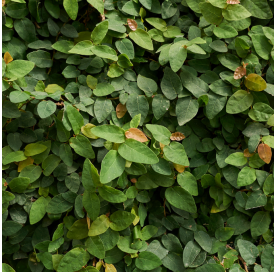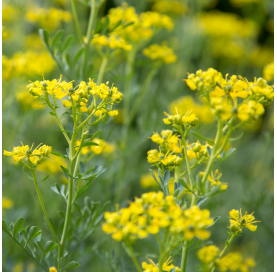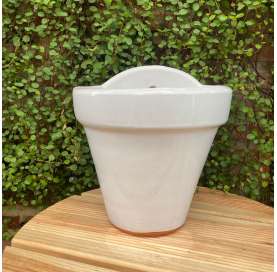Ficus pumila - creeping fig
Ficus pumila, also known as creeping fig or climbing fig, is a climbing and creeping plant from the Moraceae family. It is characterized by small, oval-shaped leaves distributed along thin and flexible stems. It is popular as an ornamental plant due to its ability to quickly cover walls, fences, pergolas, or trellises, and it can also be used as a hanging plant indoors.
 Encrypted payments for greater security
Encrypted payments for greater security
To minimize the plant's time in transit, deliveries are made only from Monday to Wednesday


Shipping only to mainland Spain and mainland Portugal
Description:
Ficus pumila, also known as creeping fig or climbing fig, is a climbing and creeping plant from the Moraceae family. It is characterized by small, oval-shaped leaves distributed along thin and flexible stems. It is popular as an ornamental plant due to its ability to quickly cover walls, fences, pergolas, or trellises, and it can also be used as a hanging plant indoors.
History and Origin:
Ficus pumila is native to East Asia, specifically China, Japan, and Vietnam. In its natural habitat, it grows in humid forests, climbing trees and covering rocky surfaces. For centuries, it has been appreciated in Asian gardens for its fast growth and ornamental value. It was introduced to Europe and the Americas in the 19th century, where it became widely used in gardens and landscaping.
Fun Facts:
- Ficus pumila has a juvenile and an adult growth form. In its juvenile phase, the leaves are small, and the stems are thin, while in the adult stage, the leaves become larger, and the stems thicken.
- It can climb vertical surfaces using aerial roots that secrete an adhesive substance, allowing it to firmly attach to walls and other structures without damaging them.
- Although primarily grown for its decorative qualities, in some regions, it is also cultivated for its small edible fruits, which are sweet when ripe, though they rarely appear in potted or garden plants.
Watering:
Ficus pumila prefers moist soil but should not be waterlogged. During spring and summer, it requires frequent watering, keeping the substrate slightly moist at all times. In winter, watering should be reduced, allowing the top layer of soil to dry out between waterings. It is essential to ensure good drainage to prevent root rot, as the plant is sensitive to overwatering.
Pruning:
Pruning Ficus pumila is essential to control its growth, as it can spread quickly and become invasive in some cases. It is best to prune in spring or early summer, cutting back longer or unruly stems. Damaged leaves or stems can be removed at any time of the year. If grown as a hanging or potted plant, pruning helps maintain its shape and prevent it from becoming overgrown.
Care:
- Light: Ficus pumila adapts well to different light conditions, from full sun to partial shade. However, indoors, it is best placed in bright, indirect light.
- Temperature: This plant prefers warm, humid climates. It does not tolerate frost, so in colder climates, it should be protected or grown indoors.
- Humidity: Ficus pumila thrives in high humidity environments. In dry climates, it is recommended to mist the leaves or place the pot on a tray with water and pebbles to maintain humidity around the plant.
- Soil: It prefers well-draining, light soil rich in organic matter. A mix for houseplants with a small amount of sand to improve drainage works well.
- Fertilizer: During spring and summer, fertilize Ficus pumila every two weeks with a diluted liquid fertilizer for green plants.
In summary, Ficus pumila is a versatile and attractive climbing plant that is easy to maintain with proper care, making it ideal for both indoor and outdoor spaces in warmer climates.
Data sheet
- Name
- Ficus pumila - creeping fig
- Origen
- East Asia, specifically China, Japan, and Vietnam
- Height
- Ficus pumila can grow up to 3-5 meters (10-16 feet) tall as a climbing plant, depending on growing conditions and available support. As a ground cover, it can spread quickly across horizontal surfaces.
- Colour
- The young leaves are light green and small, while the mature leaves are a darker green and larger. The stems are thin and light brown in color.
- Flowering
- Flowering is rare in cultivated indoor or garden plants. When it does bloom, it produces small, inconspicuous flowers. The fruits are small, spherical figs, usually turning dark purple when ripe.
- Irrigation
- It requires regular watering, keeping the soil moist but not waterlogged. During spring and summer, it should be watered more frequently. In winter, watering should be reduced, allowing the top layer of soil to dry out between waterings.
- Sowing distance
- If used as ground cover or to cover surfaces, it’s recommended to plant them about 30-60 cm (12-24 inches) apart to allow for even growth and good coverage.
12 other products in the same category:
-
Monteria hanging plate€10.00
-
-
-
Millenium planter 59cm€55.00
-
Millenium planter 99cm€120.00
-
White glazed hanging...€11.00
-
Plato colgar granadino 35cm€21.00
-
Zoysia tenusima€3.50
-
Pilotus - Fox Tail€4.00
-
-
Blue border border 27*22cm€21.00
-
Crinun purple€14.00

 English
English Spanish
Spanish



























